
Fundamentals
Dermatology, at its gentle core, encompasses the study and stewardship of the skin, hair, and nails. These external coverings, a protective embrace for the inner workings of our being, offer much more than mere surface observations. They are dynamic organ systems, constantly regenerating, responding to the world around us, and providing a living canvas for identity and expression.
When considering this field, particularly through the lens of textured hair heritage, we acknowledge a profound connection that transcends basic biology. The skin, a resilient shield, the scalp, a fertile ground, and the hair, a vibrant crown, tell stories of lineage, resilience, and unique needs.
The earliest understanding of skin and hair conditions was intrinsically linked to ancestral wisdom and elemental biology. Our forebears, through generations of keen observation and intuitive wisdom, recognized the visible signs of wellbeing and distress reflected in these outer layers. They observed that a lustrous coil spoke of vitality, a healthy scalp suggested a balanced spirit, and specific adornments communicated deep cultural narratives. This primal recognition forms the bedrock for any contemporary understanding of dermatological science, reminding us that the deepest knowledge often echoes from the source, from the very earth and traditions that shaped us.
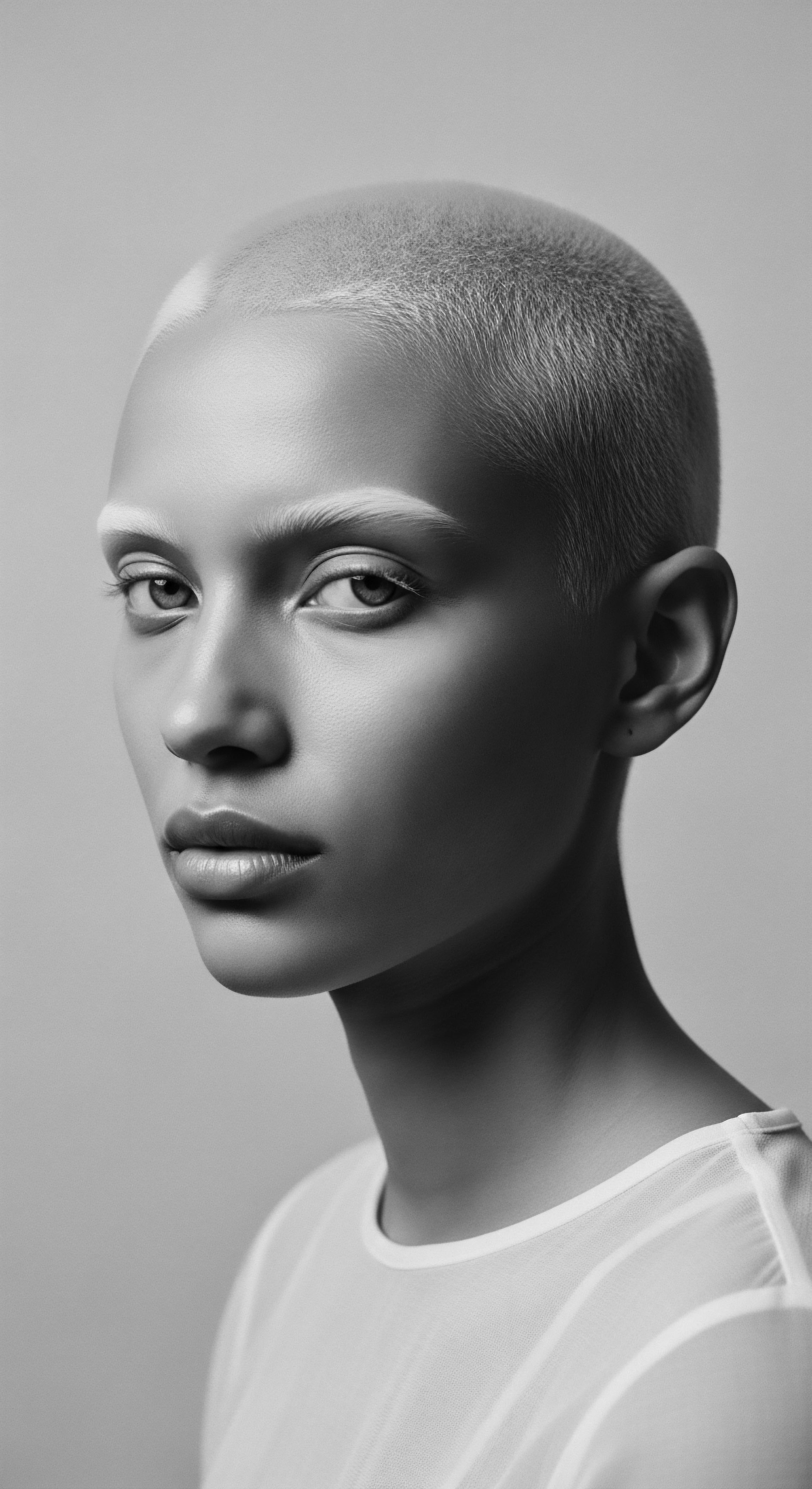
The Skin ❉ A Living Archive
The skin, the body’s largest organ, acts as a primary barrier against the external world, guarding against pathogens, regulating temperature, and mediating sensations. For individuals with rich melanin, this protective cloak carries an enhanced shield against the sun’s potent rays, a testament to generations of adaptation to varied climates. However, this physiological distinction also means certain dermatological conditions may manifest differently or require specific considerations, a subtlety often overlooked in generalized care. The skin also remembers, holding the marks of time, experience, and the echoes of ancestral practices, from the application of protective plant oils to the marks of traditional adornment.
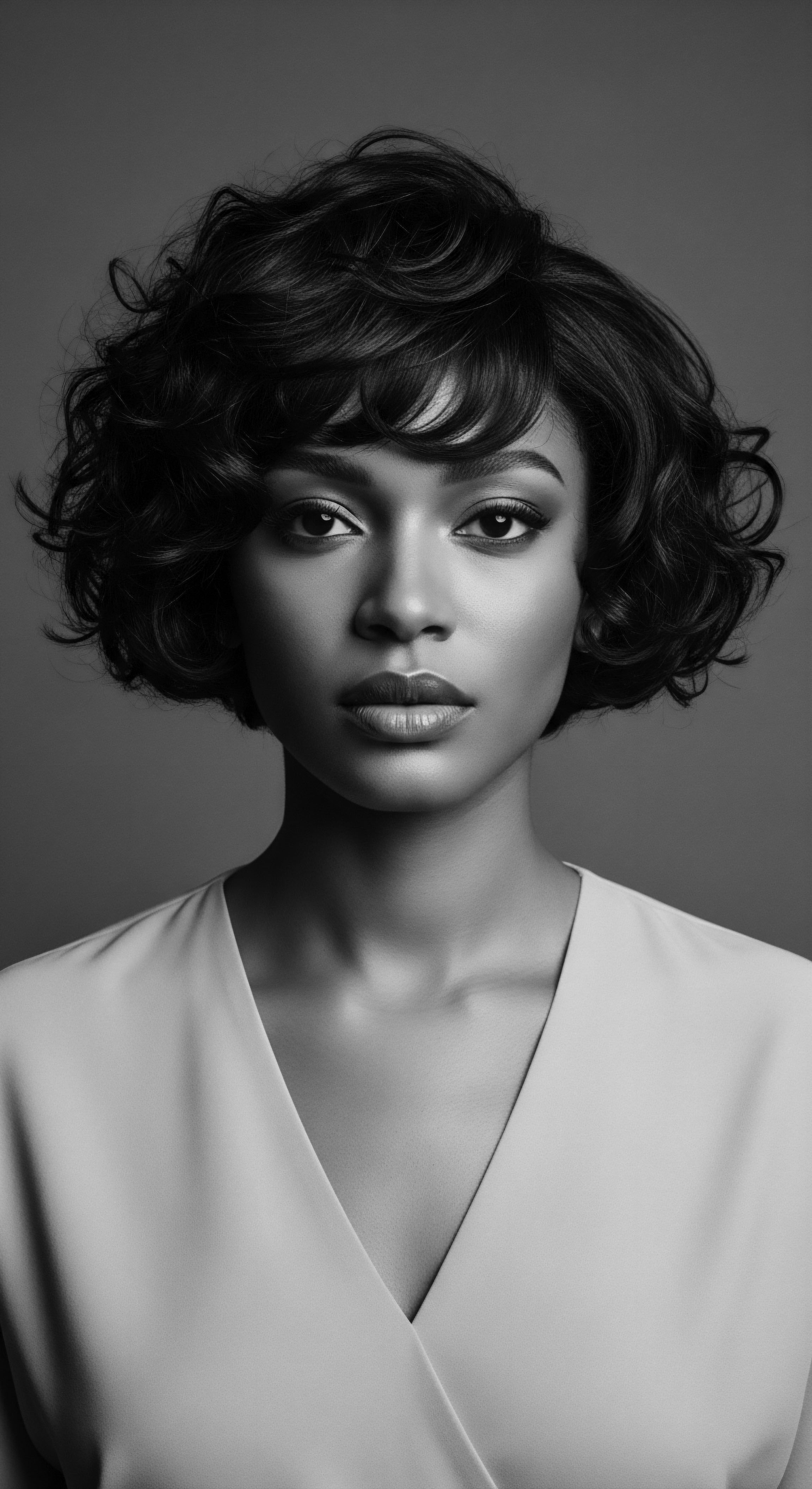
The Scalp and Hair ❉ A Crown of Ancestry
The scalp, a specialized area of skin, cradles the hair follicles, each a tiny powerhouse giving rise to individual strands. For textured hair, these follicles are often elliptically shaped, producing hair that emerges with a distinctive spiral or coiled pattern. This anatomical design contributes to the hair’s inherent strength and elasticity, yet also influences how natural oils distribute along the strand, potentially leading to dryness at the ends while the scalp remains prone to buildup. Understanding this inherent architecture is central to nurturing textured hair and its delicate ecosystem, honoring its unique requirements passed down through generations.
Dermatology, through the heritage lens, reveals the skin, scalp, and hair not merely as biological structures, but as living expressions of ancestral legacy and enduring cultural stories.
From ancient times, communities understood the significance of a healthy scalp. In many African cultures, the head is revered as the body’s most elevated part, a conduit for spiritual connection and a marker of social standing. Hair groomers possessed specialized skills, and communal grooming served as a social activity, strengthening familial bonds. This deep respect for the scalp and hair, often intertwined with spiritual beliefs, shaped the earliest practices of care, long before the advent of modern dermatological terms.
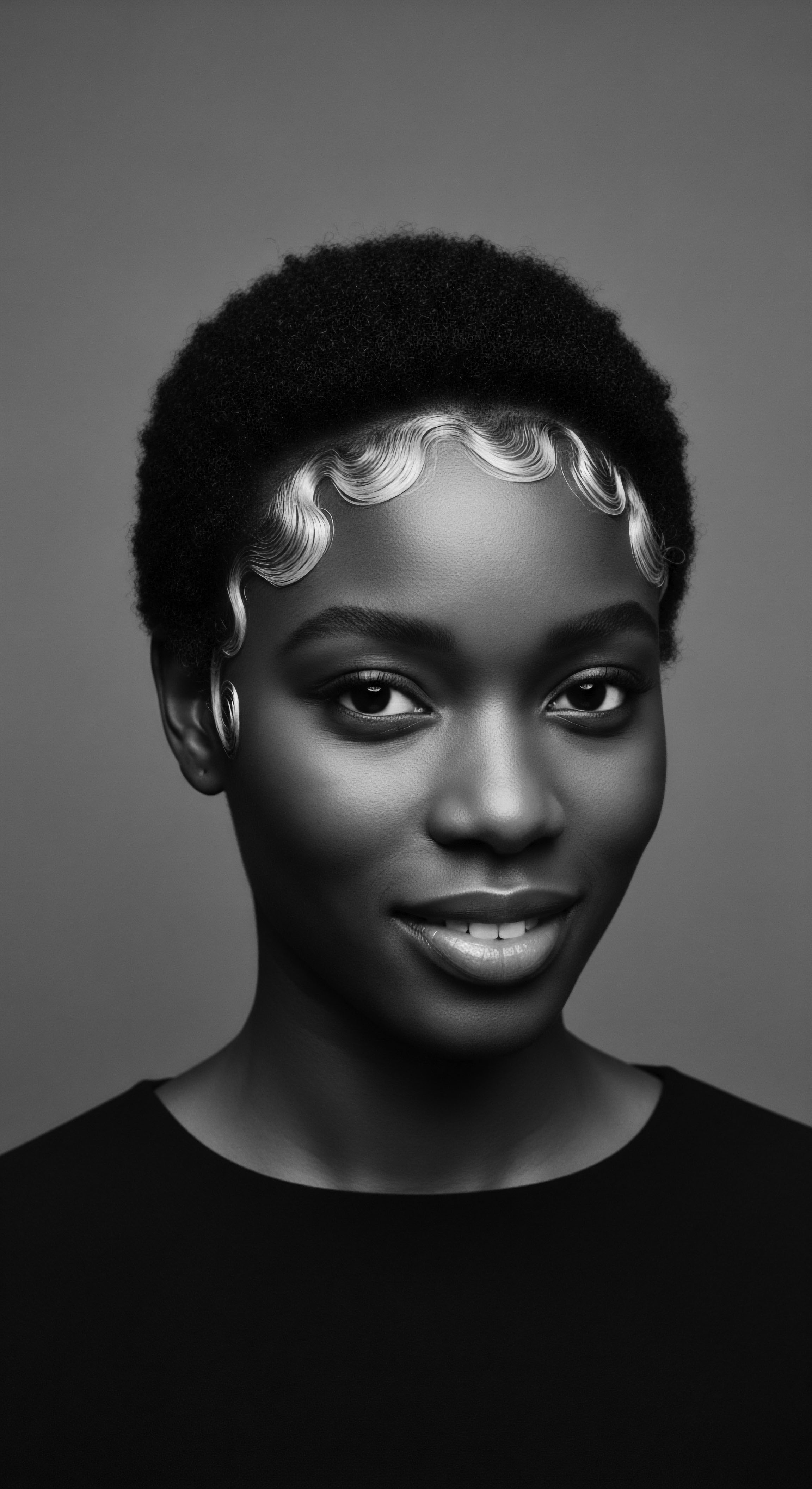
Intermediate
Venturing further into the understanding of Dermatology through the specific experiences of textured hair, we begin to recognize a complex interplay between intrinsic biological characteristics and external care practices. This exploration transcends basic definitions, moving towards an appreciation of how genetics, environment, and historical traditions coalesce to shape hair and scalp health. The journey of understanding here involves acknowledging the unique biomechanics of textured hair and how it responds to the world, often in ways distinct from other hair types.

Textured Hair Physiology ❉ An Inherited Blueprint
The distinctive coiled and spiraled nature of textured hair arises from the unique structure of its follicles, which often exhibit an elliptical cross-section and a curved growth path within the scalp. This curvature means that each strand navigates a series of twists and turns as it grows, making it inherently more prone to tangling and breakage at these bends. The natural oils, known as sebum, produced by the scalp glands, also find it more challenging to travel down the length of a coiled strand, resulting in drier ends and a scalp that might experience oil accumulation. This inherited blueprint, while contributing to the hair’s magnificent volume and resilience, also dictates a specific set of care requirements to maintain its integrity and vitality.
The strength and appearance of textured hair also connect to the composition of cysteine residues within its disulfide bonds, contributing to its unique structure. Recognizing these subtle yet profound differences in hair fiber biomechanics is fundamental for understanding common dermatological concerns that disproportionately affect individuals with textured hair. Without this nuanced comprehension, care regimens risk being counterproductive, unknowingly contributing to issues rather than resolving them.
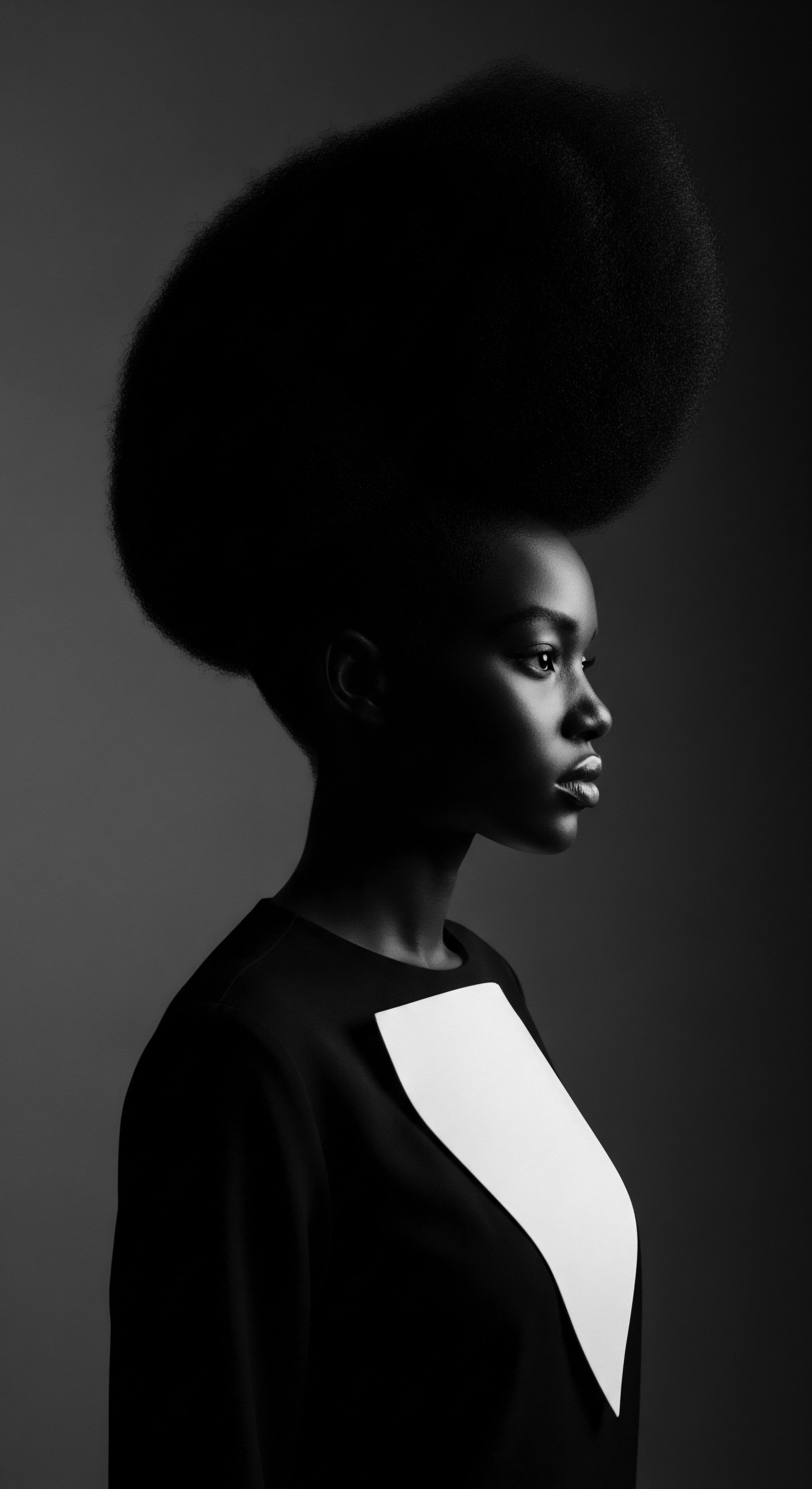
Dermatological Considerations in Textured Hair
Certain skin and scalp conditions appear with a higher frequency in individuals of African descent, requiring a tailored approach to diagnosis and care. These conditions often trace their origins to a combination of genetic predispositions and specific hairstyling practices that have evolved within cultural contexts. For example, Central Centrifugal Cicatricial Alopecia (CCCA) is a form of scarring hair loss almost exclusively seen in women of African descent. While its exact cause remains elusive, a confluence of genetic factors and hair care practices, such as excessive tension from styling, are thought to contribute to its manifestation.
Another prevalent concern is Traction Alopecia (TA), a condition resulting from persistent pulling forces on the hair roots. Historically, and still today, many traditional hairstyles involve tight braiding, weaving, or extensions that place considerable tension on the hair follicles. An industry study of African women volunteers found a prevalence of 33% for traction alopecia, indicating a substantial impact of styling practices within these communities. This statistic underscores the profound connection between cultural expressions through hair and their physiological consequences, highlighting the need for culturally informed dermatological interventions.
These conditions underscore a critical need for dermatological understanding to extend beyond generic presentations, embracing the specificities of textured hair. A holistic practitioner, steeped in ancestral wisdom, would recognize that traditional practices, while sometimes contributing to certain challenges, also hold the keys to protective care, often involving natural oils, gentle detangling methods, and communal grooming rituals that fostered healthy hair and scalp environments.
The specific coiled nature of textured hair, while a source of beauty and cultural pride, also necessitates a nuanced dermatological approach, recognizing the interplay of genetics, styling traditions, and prevalent conditions like Traction Alopecia and Central Centrifugal Cicatricial Alopecia.
The rise of the natural hair movement in contemporary times, a reclamation of ancestral beauty, further emphasizes the importance of understanding textured hair’s unique needs. This movement, driven by a desire to reconnect with heritage, has also prompted a re-evaluation of hair care products and practices, steering away from harsh chemical treatments that historically damaged the hair and scalp, often in pursuit of Eurocentric beauty standards.
Understanding the intricate dynamics of textured hair, from its microscopic structure to the broader strokes of its cultural journey, is paramount for any engaged in its care. It allows for a more compassionate, effective, and respectful approach, bridging the divide between scientific insight and deeply rooted ancestral practices.
| Traditional Ingredient/Practice Shea Butter (Vitellaria paradoxa) |
| Ancestral Use Moisturizing and protecting skin and hair from harsh environmental conditions. |
| Dermatological Relevance/Modern Connection Rich in fatty acids and vitamins A and E; scientifically validated for moisturizing and anti-inflammatory properties, beneficial for dry scalp and hair. |
| Traditional Ingredient/Practice African Black Soap |
| Ancestral Use Cleansing skin and hair, treating skin conditions, bathing newborns. |
| Dermatological Relevance/Modern Connection Natural cleanser made from plantain skins, cocoa pod ash, shea butter, and palm oil. Addresses acne, dark spots, and oily skin, but pH levels require careful use for hair. |
| Traditional Ingredient/Practice Rooibos Tea (Aspalathus linearis) |
| Ancestral Use Brewed as a tea for various ailments, including digestive problems and allergies. |
| Dermatological Relevance/Modern Connection Contains antioxidants and antimicrobial properties. Used topically for scalp health and believed to aid healthy hair growth. |
| Traditional Ingredient/Practice Moringa Seed Oil |
| Ancestral Use Used on skin and hair to moisturize and regenerate. |
| Dermatological Relevance/Modern Connection Contains oleic acid, omega fatty acids, and vitamins E and A. Hydrates and nourishes hair and scalp. |
| Traditional Ingredient/Practice These ancestral remedies underscore a continuous wisdom regarding natural elements and their capacity to support skin and hair health, offering valuable lessons for contemporary dermatological care. |
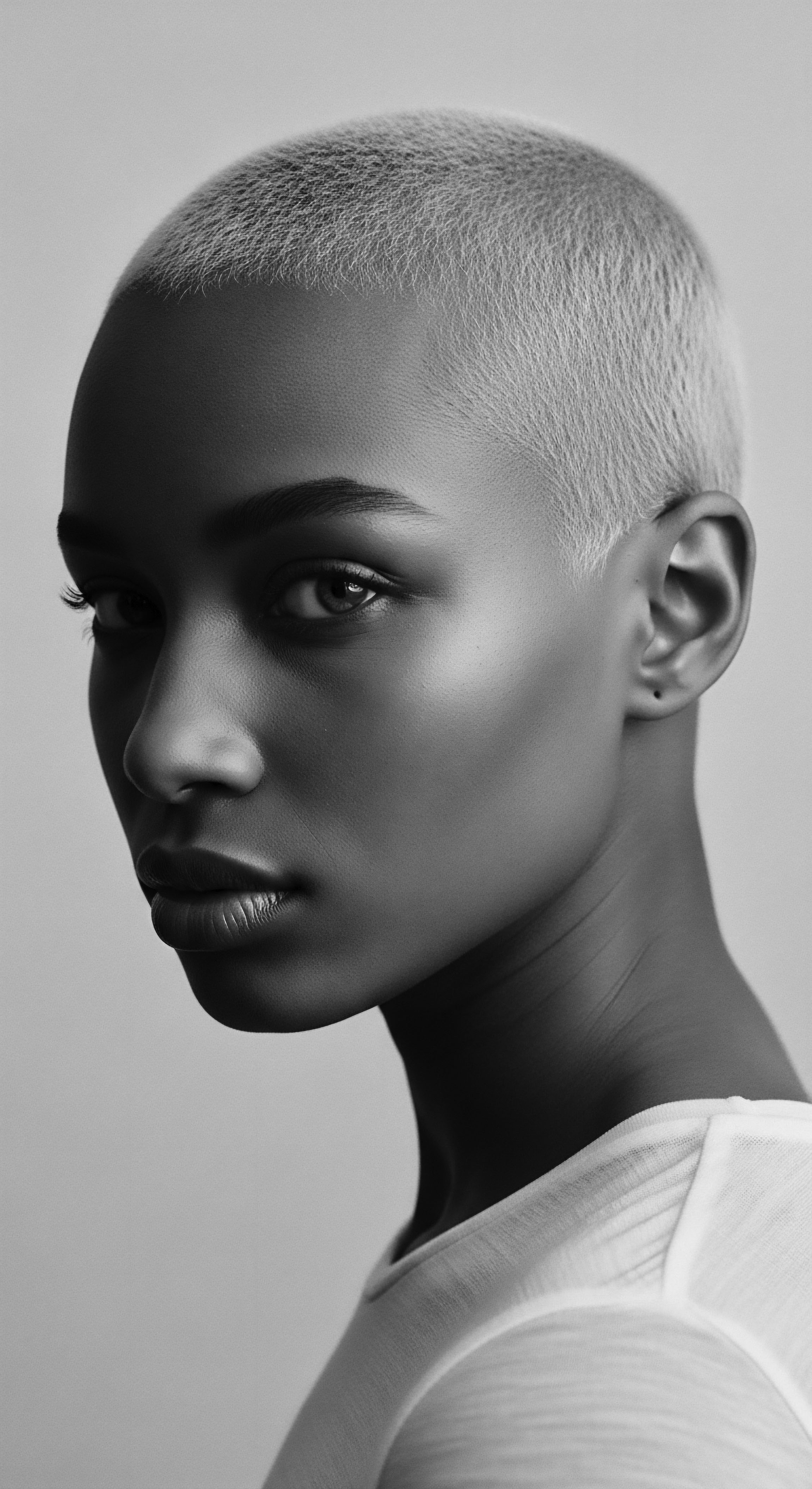
Environmental and Cultural Influences
The very environment shapes hair and skin, and human cultural responses to these environments have, in turn, shaped hair care traditions. Climates across Africa, from arid deserts to humid rainforests, led to the development of unique practices for protection and maintenance. The frequent use of occlusive materials, such as butters and oils, in traditional African hair care reflects a profound understanding of moisture retention in challenging conditions. These practices, born of necessity and wisdom, sought to mitigate dryness and protect against environmental stressors, aspects still relevant in dermatological discussions today.
The communal nature of hair grooming in many African societies also speaks to a deep, integrated approach to well-being. Scalp massages, for instance, were not merely physical acts; they were bonding experiences, promoting social connections and fostering relationships, while also stimulating blood flow to the scalp and distributing natural oils. These historical rituals provide a powerful counterpoint to often individualized and detached modern dermatological consultations, underscoring the importance of context and community in true holistic care.

Academic
Dermatology, through an academic lens deeply attuned to heritage, transcends the mere description of skin and hair conditions to encompass a sophisticated examination of biological distinctions, socio-cultural determinants, and the enduring legacies of ancestral practices. It is a field that, when approached with rigorous intellectual curiosity and cultural humility, unveils the intricate dance between genetics, historical trauma, and the resilient human spirit as expressed through the external integument. This academic exploration demands a re-calibration of conventional perspectives, compelling us to interpret physiological phenomena within the rich context of textured hair experiences and the wisdom of generations past.

Pathophysiology and Ancestral Resonance
The pathophysiology of dermatological conditions affecting textured hair often presents with specific manifestations rooted in its unique follicular architecture. Afro-textured hair, characterized by its elliptical shaft and sharp curvature at the hair bulb, experiences inherent mechanical vulnerability. This morphology can impede the smooth egress of sebum and the even distribution of natural lipids along the hair shaft, leading to a propensity for scalp oil accumulation and distal dryness. Such inherent biomechanical differences contribute to the prevalence of specific dermatoses.
For instance, Central Centrifugal Cicatricial Alopecia (CCCA), a primary lymphocytic scarring alopecia predominantly affecting Black women, remains a significant challenge. While the precise etiology of CCCA is still under active investigation, current understanding points to a complex interplay of genetic susceptibility, inflammatory responses within the hair follicle, and external factors like chronic tension from hairstyles and chemical manipulation. The historical adoption of chemical relaxers, initially formulated to alter the hair’s natural curl pattern to align with Eurocentric beauty ideals, inadvertently introduced widespread exposure to harsh chemicals that could compromise scalp integrity and potentially contribute to conditions like CCCA.
The persistence of conditions like CCCA underscores the profound impact of historical beauty standards and the adaptive strategies Black communities undertook to survive within oppressive systems. The desire for straightened hair, often linked to social acceptance and economic opportunity, led to practices that, while understandable within their historical context, sometimes compromised scalp health. This narrative highlights a critical junction where social history directly influences clinical presentation, necessitating a dermatological approach that is both scientifically informed and historically empathetic. The understanding of specific cellular pathways, inflammatory mediators, and genetic markers linked to these conditions must therefore exist in conversation with the social landscapes that shaped the hair practices over centuries.
Academic dermatology, when steeped in heritage, reveals the intertwined nature of textured hair’s unique biology, historical beauty standards, and socio-cultural impacts on scalp and hair health.
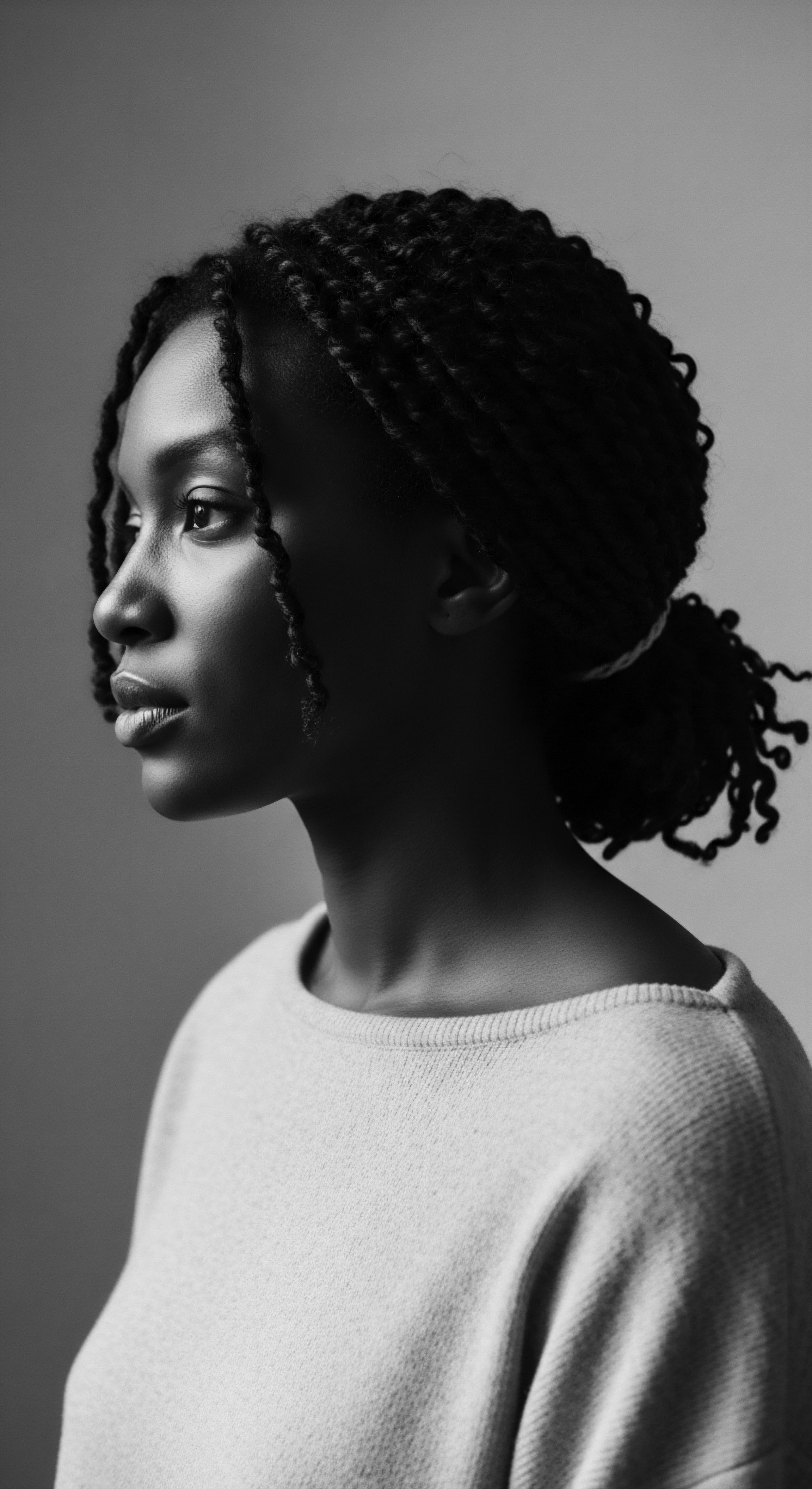
The Burden of Hair Discrimination ❉ A Historical Case Study
The very concept of “good hair” versus “bad hair” emerged from the oppressive structures of slavery and colonialism, creating a hierarchy that favored straighter, more European-like hair textures. This deeply ingrained bias led to immense psychological distress and practical challenges for individuals with textured hair. A poignant historical example that powerfully illuminates Dermatology’s connection to textured hair heritage and ancestral practices is the documented prevalence of Traction Alopecia (TA) among women of African descent.
In a foundational study from South Africa, Khumalo and Colleagues in 2008 Documented That Traction Alopecia was Nearly Twice as Likely to Be Present in South African Women or Children Who Had Previously Experienced Tight, Painful Braids (odds Ratio = 1.94, P = 0.004) or Noted “pimples” at the Base of Their Braids (odds Ratio = 1.81, P = 0.046) at the Time of Styling. This rigorously backed data, while focusing on a specific cohort, reflects a widespread experience across the diaspora, where historically imposed styling practices, often driven by societal pressures for conformity, inadvertently contributed to significant hair loss.
The historical context of hair discrimination is not merely a sociological footnote; it profoundly shapes dermatological presentations. Enslaved Africans were often forcibly shaven, a dehumanizing act designed to strip them of their identity and cultural markers, including the intricate hairstyles that conveyed status, age, and spiritual beliefs. Deprived of traditional tools and time for proper care, their hair became matted and damaged, further stigmatized by Eurocentric beauty standards.
This historical trauma led to generations resorting to aggressive straightening methods, from heated butter knives to lye-based relaxers, all of which had significant dermatological consequences, including chemical burns and various forms of alopecia. The statistical prevalence of TA in later generations, as highlighted by Khumalo’s work, is not an isolated clinical finding, but a direct legacy of these historical pressures, demanding that academic dermatology acknowledge its deep roots in systemic inequities.
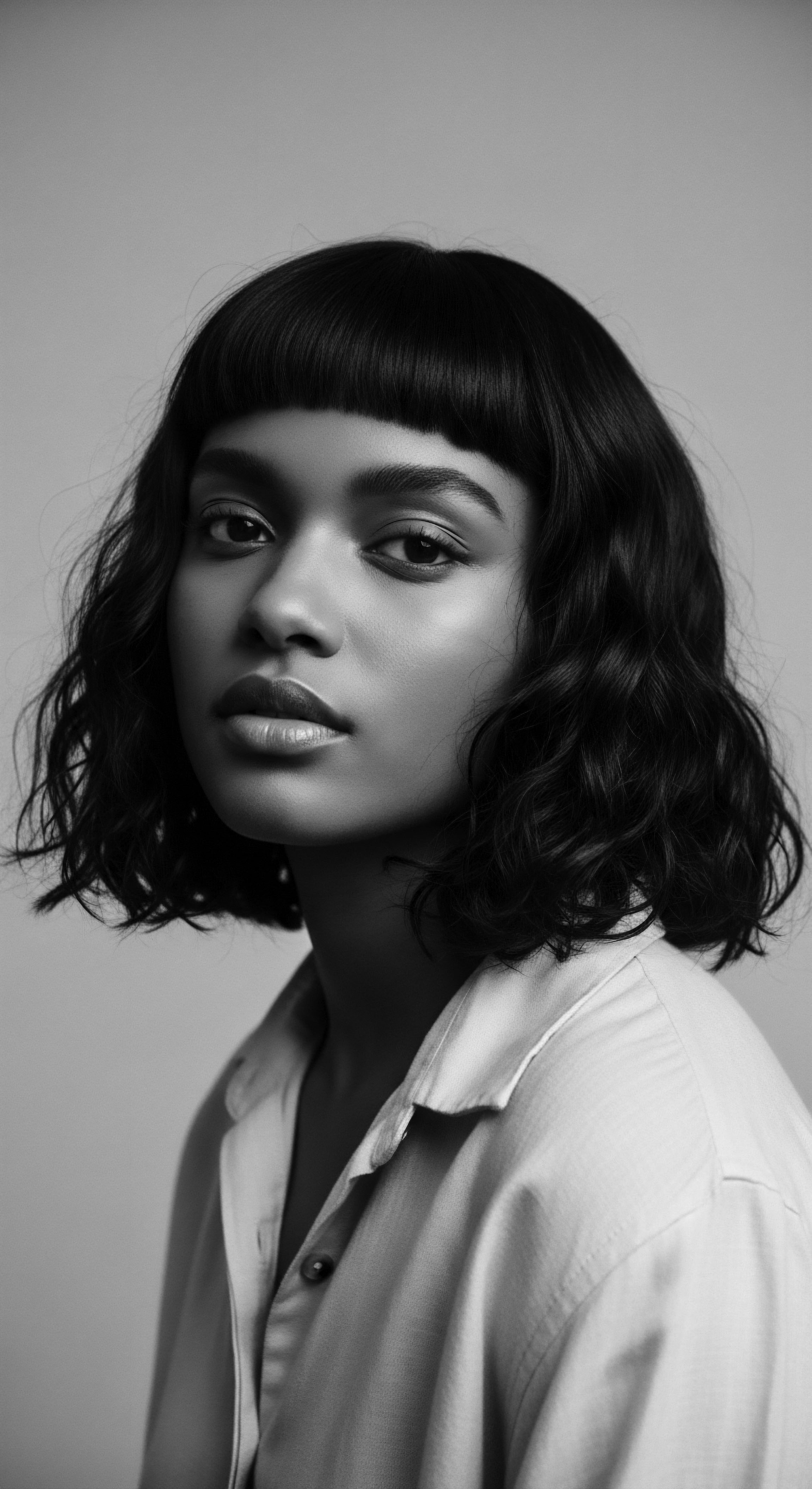
Therapeutic Approaches ❉ Bridging Worlds
An academic understanding of Dermatology for textured hair calls for therapeutic strategies that respectfully bridge contemporary scientific advancements with ancestral wisdom. The recognition of traditional African botanicals used for hair and scalp care provides a fertile ground for research. Many of these ingredients, such as shea butter, moringa oil, and various plant extracts, possess scientifically verifiable properties—anti-inflammatory, antimicrobial, and moisturizing—that align with their traditional applications.
For example, a review of African plants used for hair conditions identified 68 species, with 58 of them also showing potential as anti-diabetic treatments when taken orally. While traditionally applied topically for hair, this suggests an intriguing connection between local topical nutrition and metabolic processes, inviting deeper scientific inquiry into “scalp diabetes” or local glucose metabolism in hair loss.
This interdisciplinary approach requires dermatologists to move beyond a purely Western biomedical model. It means fostering cultural competence, where practitioners are not only aware of but actively seek to understand the historical and social factors influencing hair care choices. Providing effective care involves respectful dialogue, acknowledging that a patient’s chosen hairstyle, even if contributing to a condition, might be a complex expression of identity, tradition, or a response to societal pressures. Academic dermatology, therefore, has a responsibility to educate future clinicians on these critical socio-historical contexts, ensuring that treatment recommendations are not only clinically sound but also culturally resonant and empowering.
- Alopecia Areata ❉ This autoimmune condition, where the immune system attacks hair follicles, affects individuals of all backgrounds, but its psychological impact can be particularly pronounced in Black communities due to the deep cultural significance of hair as a marker of identity and heritage.
- Tinea Capitis ❉ A fungal infection of the scalp, it is more prevalent in pre-adolescent children, particularly those of African descent, and requires specific diagnostic and treatment considerations due to the unique hair shaft structure.
- Folliculitis Keloidalis Nuchae (FKN) ❉ This chronic inflammatory condition, leading to keloidal scarring on the nape of the neck, is also disproportionately observed in individuals with coiled hair textures, often exacerbated by close shaving or friction.

The Helix of Identity ❉ Dermatology as a Mirror of Selfhood
Ultimately, an academic understanding of Dermatology in the context of textured hair points to its role as a mirror of selfhood and identity. Hair is not merely a biological appendage; it is a powerful symbol of ethnic identity, social status, and spirituality across African cultures. The systematic efforts during slavery to strip enslaved people of their traditional hairstyles served as a potent tool of dehumanization, directly impacting their connection to ancestral practices and self-perception. This historical legacy continues to manifest in contemporary societal pressures and discrimination against natural Black hairstyles in professional and educational settings.
The field of dermatology, therefore, is uniquely positioned to advocate for a more inclusive and equitable understanding of hair health. This involves supporting initiatives like the CROWN Act, which seeks to ban discrimination based on hair texture or protective hairstyles. Furthermore, it necessitates a commitment to research funding directed at hair disorders in individuals with skin of color, recognizing that many conditions, such as CCCA and TA, are still under-researched despite their high prevalence.
Academic dermatology must champion a shift from a generalized approach to one that acknowledges and celebrates the diversity of hair types, embracing the full spectrum of human hair and its deep cultural narratives. This perspective fosters trust between patients and providers, leading to improved patient adherence and, ultimately, better health outcomes, while affirming the profound connection between hair and an individual’s ancestral story.

Reflection on the Heritage of Dermatology
As our journey through the intricate landscape of Dermatology and textured hair culminates, a profound realization settles ❉ this discipline, at its truest, is a living, breathing archive of human heritage. The echoes from ancient sources, the tender threads of generational care, and the unbound helix of identity all intertwine, revealing a narrative far richer than mere clinical definitions. Dermatology, when viewed through the compassionate eyes of Roothea, becomes a sacred practice, honoring the resilience of hair that has witnessed centuries of joy, struggle, and unwavering beauty.
The very strands that crown us carry stories whispered down through ancestral lines, of hands that first smoothed natural oils, of communal gatherings where hair became a canvas for shared experience, and of the enduring spirit that refused to be diminished, even when faced with attempts to erase identity. The skin, a parchment inscribed with the narratives of sun and shadow, of adaptation and resilience, quietly reminds us of the profound connections we hold to the earth and to each other. Every coil, every gentle curve, speaks of a wisdom that preceded modern science, a testament to intuitive care practices that often find their validation in contemporary research.
To tend to textured hair, then, is to participate in a timeless ritual. It is to acknowledge that the well-being of the scalp is intrinsically linked to the spirit, that the health of a single strand reflects the strength of an entire lineage. Our understanding of Dermatology, therefore, must remain fluid, open to the whispers of the past, sensitive to the lived experiences of the present, and ever-mindful of the vibrant futures we are collectively shaping. The path forward is one of continuous learning, of holding space for both scientific rigor and ancestral reverence, ensuring that textured hair, in all its magnificent forms, is seen, understood, and cherished for the living legacy it truly is.
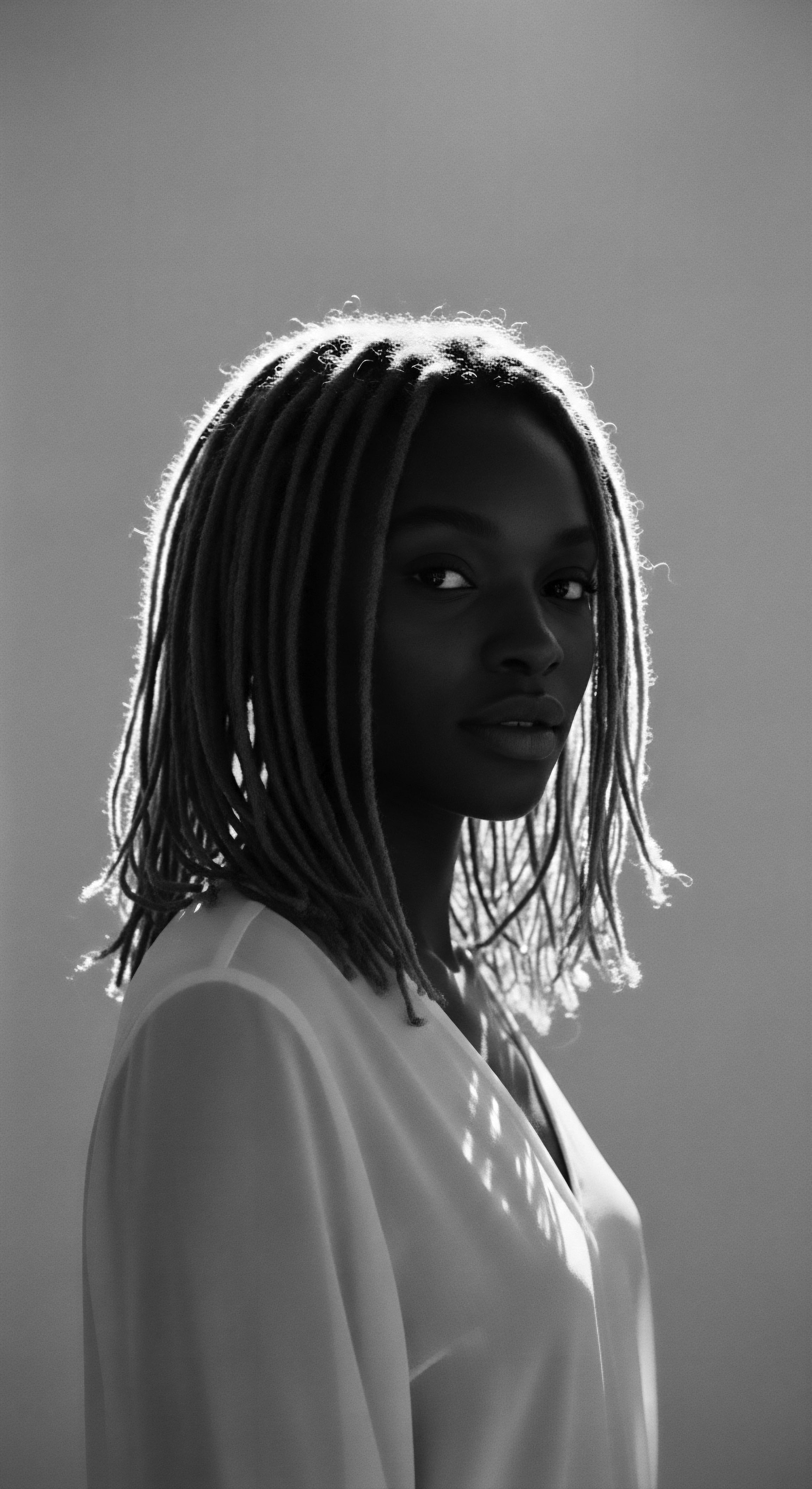
References
- Byrd, Ayana D. and Lori L. Tharps. Hair Story ❉ Untangling the Roots of Black Hair in America. St. Martin’s Press, 2014.
- Dlova, Ncoza C. and Moses Abednego Ollengo. “Traditional and Ethnobotanic Dermatology Practices in Africa.” Clinics in Dermatology 36, no. 3 (2018) ❉ 353-359.
- Khumalo, Ncoza C. A. M. G. G. Jessop, G. M. Hall, P. G. Westerhof, and R. M. E. R. G. G. H. M. J. de Wet. “Traction Alopecia ❉ The Root of the Problem.” Clinical and Experimental Dermatology 33, no. 4 (2008) ❉ 423-427.
- McMichael, Amy J. and Valerie D. Callender. “Hair Care Practices in African American Women.” Cutis 72, no. 4 (2003) ❉ 280-282, 285-289.
- Rodriguez, Aliya, and Brooke Jackson. “What Every Dermatologist Must Know About the History of Black Hair.” The Journal of Clinical and Aesthetic Dermatology 16, no. 11 (2023) ❉ 35-38.
- Thokare, Sachin B. et al. “Cosmetopoeia of African Plants in Hair Treatment and Care ❉ Topical Nutrition and the Antidiabetic Connection?” Diversity 16, no. 2 (2024) ❉ 96.
- Wright, N. M. et al. “Traction alopecia in primary school children ❉ A population-based study in Cape Town, South Africa.” Journal of the American Academy of Dermatology 60, no. 2 (2009) ❉ 313-317.
